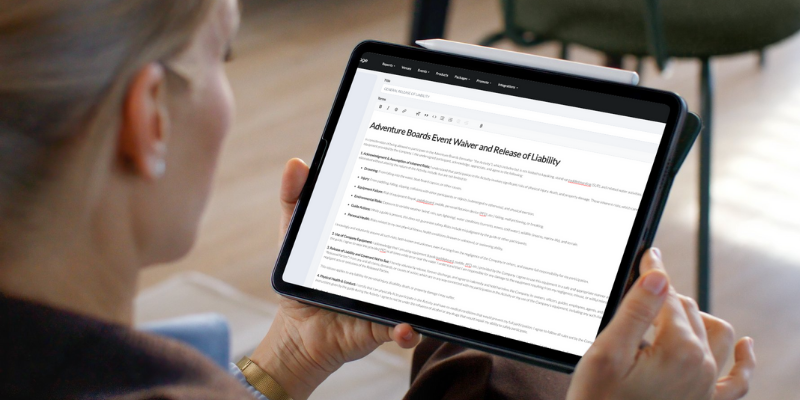One of the most common questions we hear from Passage clients is, “can I actually make money from a livestreamed event?”
It’s an understandable concern: the rise of free livestreaming platforms like Facebook and Instagram Live, YouTube, and Twitch — which offer no way to secure access to your event, and provide limited options for donations (or gouge you with fees) — have left event producers wondering whether it’s even possible to host a profitable event or fundraiser anymore.
But here’s the thing: your fans still want to support you. They still want to engage with you. You still have plenty to offer.
Whether your livestreamed event is paid or free, here are seven things you can do to increase donations.
1. Use the Donate button
With a lot of livestreaming services, you either have to agree to let the platform take a huge chunk of your donations or cobble together your own system which uses a different donation engine, streaming platform, and ticketing service. That’s a lot to ask of even experienced streamers.
Passage is a simple, all-in-one platform. Using their payment info already saved to their account, guests can donate with two clicks: enter the amount they wish to give and click “donate”. It’s really that easy.
You can choose whether you want to display the donate button, but events that make use of this feature bring in more revenue.
2. Remind guests about the Donate button
It may seem obvious to you, but your guests might miss that big donate button on the screen. They’re focused on the show!
Plan several mini-breaks throughout your event to tell guests about the donate feature, ask them to give, and be sure to explain how their donations help support you.
3. Ask for a specific amount
Suggesting specific amounts leads to improved donation form performance by increasing average online gift size. Research confirms this over and over again.
Instead of asking your supporters how much they want to give, suggest a handful of amounts. This removes the guesswork from the equation (“how much should I give?”), making it simpler for guests. It can have the added benefit of encouraging supporters to give larger amounts than they would have if left to make their own decisions alone.
Our friends at GO! Comedy implemented their own, fun twist on this strategy.
When their improv theater temporarily closed for in-person performances, they launched a series of virtual shows and set up a “support tickets” page where guests could donate at various levels. The page suggests different amounts, from an easy $5 all the way up to the Bezos Special ($1 million). It’s cleverly written and makes it simple for supporters to choose their gift amount. Check it out here.
Wan to set up something similar for your event? Schedule an onboarding call with our support team! We’ll set everything up for you.
A lot of events are hesitant to do this. Some worry that they’ll fall short of their goal and it will look bad if guests see only a few dollars have been donated.
But remember: supporters love to see the difference their donations are making. There’s a psychology behind displaying your progress that helps donors feel motivated to help you achieve those last few dollars. Some may end up donating two or even three times throughout the event to help you reach that goal.
There are a couple of keys to making this strategy work:
- Set a reasonable goal. Pulling a number out of thin air will not set you up for success. Use your previous revenues or donations as a starting point, and consider other factors like the number of tickets sold, the type of event you’re producing, and the current economic environment in setting that goal.
- Make a plan to achieve that goal. Just as you’d plan the revenue and expenses of an in-person event. Some events set a fundraising goal that includes the revenue they plan to make from ticket sales. By the time the virtual event begins, they’re already more than half way to their goal. Others set a separate, lower amount that they plan to generate from in-event donations alone.
5. Make the impact tangible
Donors like to visualize where their money is going. It’s why so many charities use messaging like “sponsor a child for just $2 a day” or “$20 provides one family with a flock of chickens.”
This can get tricky when you don’t already have tidy cost breakdowns like “$20 buys healthy meals for one family for a whole week” or “$8 helps one child learn to read.”
Think about the costs you do have and how those might be presented in manageable pieces that donors can digest:
- What does your electric bill look like? Break that into a per-day total. “$10 keeps the lights on for one more day.”
- Running a mixology class? “Buy the bartender a drink: $5.”
- If you run a sports team, think about the hard costs you have: “$50
- supplies one player with new gear for the season.”
- Gots full-time staff who need to be paid? Offer a cutesy donation tier like “ CEO for the day” with the amount it takes to employ your team for one day, or try something like “Buy pizza for our volunteers: $20.”
You don’t have to be tied down to spending donations on those specific items, but it helps supporters picture the impact their gifts will have on your organization.
Even if this strategy doesn’t make sense for your individual event, you can still make a gift tangible for supporters by using this next tactic…
6. Offer something in return
Some of the most successful livestreamed events we’ve seen use what we’d call the public broadcasting model, where supporters receive gifts or prizes for donating at a given dollar level.
Our friends at Chinook Fest introduced a unique system during their virtual music festival which we thought was really innovative – and successful! Chinook Fest gave away prizes throughout the event; for every $10 guests donated, they earned an additional entry into a giveaway. It was a great system to encourage multiple donations and made it simple for fans to decide how much to give.
There are tons of other ways you could implement this strategy for your livestreamed event. Offer exclusive merch or special experiences like a one-on-one meet and greet with the band or a private, virtual yoga class. These are things fans can’t just buy off the shelf whenever they want, so there’s a sense of urgency and limited availability. If they don’t jump on the opportunity now, they may never get another chance.
7. Say thank you
This one might sound obvious, too, but it has a huge impact on how your supporters feel about their gift. Everyone likes to hear those two magic words. You can even call out donors during the event. It’s free and it makes donors feel appreciated, so they’ll be more likely to give again in the future.
Need some help setting up your virtual event? Schedule an onboarding call with our support team and we’ll set everything up for you!












